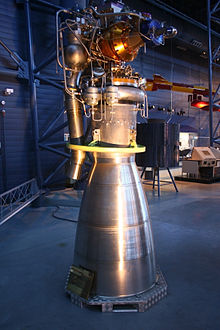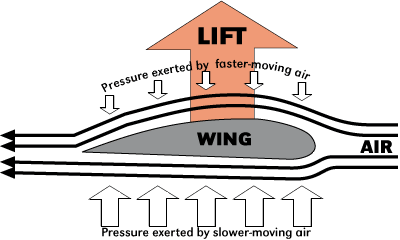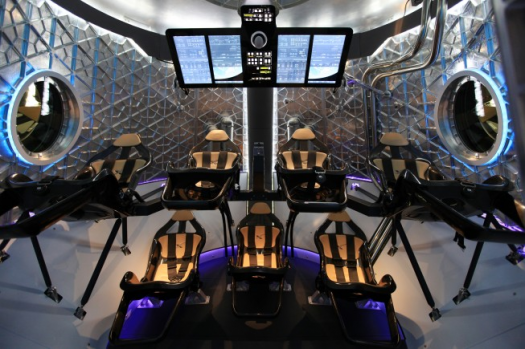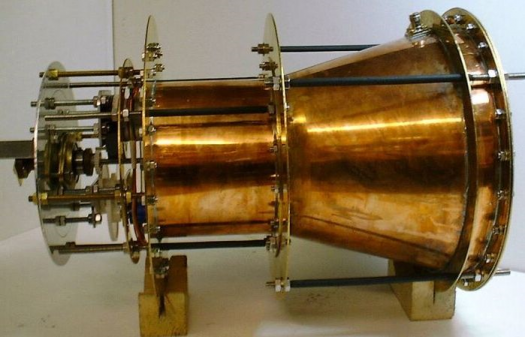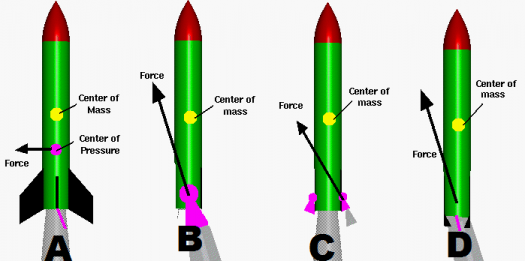Aerospace Quiz: Trivia Questions! MCQ
(175).jpg)
.
- 1.
How is a rocket engine exhaust prevented from overheating?
- A.
By Spraying Water on it while the engine is running
- B.
By Using a radiator to radiate the heat to the surroundings
- C.
By Spraying some of the propellant on it
- D.
By periodically shutting down the engine and allowing it to cool
Correct Answer
C. By Spraying some of the propellant on itExplanation
By spraying some of the propellant on the rocket engine exhaust, the propellant absorbs some of the heat generated by the engine. This helps in preventing the exhaust from overheating. The propellant acts as a coolant, dissipating the excess heat and maintaining the temperature within a safe range.Rate this question:
-
- 2.
What is the main difference between rocket fuel and monopropellant?
- A.
Monopropellent generates less thrust
- B.
Monopropellent does not use oxidizer
- C.
Monopropellents are only used to accelerate/decelerate objects having small mass
- D.
Monopropellents cannot be used in the Earths atmosphere due to insufficient pressure difference
Correct Answer
B. Monopropellent does not use oxidizerExplanation
Monopropellant is different from rocket fuel because it does not require an oxidizer to generate thrust. Rocket fuel, on the other hand, needs both fuel and oxidizer to produce combustion and generate thrust. Monopropellants are designed to be self-contained and can undergo a chemical reaction that releases energy without the need for an external oxidizer. This makes them simpler and more convenient to use in certain applications where the use of an oxidizer may not be practical or feasible.Rate this question:
-
- 3.
Name the principle shown in the image.
Correct Answer
Bernoulli’s Principle, bernoullis principle, Bernoulli's principleExplanation
The principle shown in the image is Bernoulli's Principle. This principle states that as the speed of a fluid increases, its pressure decreases. It is based on the conservation of energy in a fluid flow system. This principle is applicable to various phenomena, such as the lift force generated by an airplane wing, the flow of blood in arteries, and the operation of a carburetor.Rate this question:
- 4.
What material was used in the construction of the first airplanes?
- A.
Iron
- B.
Plywood
- C.
Aluminium
- D.
Composite Materials
Correct Answer
B. PlywoodExplanation
During the construction of the first airplanes, plywood was used as the material. Plywood is a lightweight and strong material made by gluing together several layers of thin wood veneers. It was a popular choice for aircraft construction due to its durability, flexibility, and low weight. Plywood provided the necessary strength and stability required for the early aircraft while keeping the overall weight of the plane relatively low.Rate this question:
-
- 5.
Name the recently unveiled Space Vehicle shown in the picture.
Correct Answer
Dragon 2.0, dragon 2.0, dragon 2, Dragon 2Explanation
The recently unveiled Space Vehicle shown in the picture is called Dragon 2.0.Rate this question:
- 6.
Why do scientists believe it is not possible to make an EM drive?
- A.
It violates the law of conservation of momentum
- B.
It violates Newton’s third law
- C.
It violates the law of conservation of Energy
- D.
It violates the Second law of thermodynamics
Correct Answer
A. It violates the law of conservation of momentumExplanation
The reason scientists believe it is not possible to make an EM drive is because it violates the law of conservation of momentum. This law states that the total momentum of an isolated system remains constant unless acted upon by an external force. The EM drive claims to generate thrust without expelling any propellant, which contradicts this fundamental principle. If the EM drive were to work as claimed, it would mean that momentum is being created out of nothing, which goes against our understanding of physics. Therefore, scientists are skeptical about the feasibility of the EM drive.Rate this question:
-
- 7.
Name the point(s) in space between two objects where the effect of gravity due to those objects is not felt.
Correct Answer
Lagrange point, Lagrangian point, lagrange point, lagrangian pointExplanation
Lagrange points, also known as Lagrangian points, are the points in space where the gravitational forces of two large objects, such as a planet and its moon, balance the centrifugal force felt by a smaller object. At these points, the gravitational pull from the two objects cancels out, allowing a smaller object to remain relatively stationary with respect to the larger ones. Lagrange points are stable locations where spacecraft and satellites can be placed to minimize fuel consumption and maintain a consistent position relative to the two larger objects.Rate this question:
- 8.
What is the term used to describe controlling the orientation of an object with respect to an inertial frame of reference or another entity?
- A.
Position Control
- B.
Mood control
- C.
Attitude control
- D.
Gryo control
Correct Answer
C. Attitude controlExplanation
Attitude control is the term used to describe controlling the orientation of an object with respect to an inertial frame of reference or another entity. It involves adjusting the object's position, roll, pitch, and yaw angles to achieve a desired orientation. This control is crucial in various applications, such as spacecraft maneuvering, aircraft stabilization, and robotics, where maintaining a specific attitude is necessary for proper functioning and stability.Rate this question:
-
- 9.
What is the Indicated Air Speed (IAS)?
- A.
IAS is the speed that aircraft estimate by measuring air pressures
- B.
IAS is the aircraft speed when moving on the ground
- C.
IAS is the output speed of the engine air
Correct Answer
A. IAS is the speed that aircraft estimate by measuring air pressuresExplanation
IAS stands for Indicated Air Speed, which is the speed that aircraft estimate by measuring air pressures. This measurement is obtained through instruments such as the pitot-static system, which measures the difference between the atmospheric pressure and the pressure created by the aircraft's motion through the air. IAS is an important parameter for pilots as it helps them determine the aircraft's performance and ensure safe operation.Rate this question:
-
- 10.
Name the company that announced to use the seen technology to make ‘Flying Taxis’.
Correct Answer
Uber, uberExplanation
Uber announced to use the seen technology to make 'Flying Taxis'.Rate this question:
- 11.
The process used when the aircraft stops hovering in the air and starts moving forward is,
- A.
Forward Propulsion
- B.
X-impulsing
- C.
Thrust vectoring
Correct Answer
C. Thrust vectoringExplanation
Thrust vectoring is the process used when the aircraft stops hovering in the air and starts moving forward. This technique involves redirecting the thrust of the engines to change the direction of the aircraft. By adjusting the angle of the engine nozzles, the aircraft can generate forward propulsion and move in the desired direction. This allows for greater maneuverability and control during flight.Rate this question:
-
- 12.
What type of engine is shown in the picture?
- A.
Scramjet engine
- B.
Compression ignition engine
- C.
Single cylinder engine:
- D.
Otto cycle engine
Correct Answer
A. Scramjet engineExplanation
The correct answer is Scramjet engine. The picture likely shows a Scramjet engine because it is a type of engine specifically designed for high-speed propulsion. Unlike traditional jet engines, Scramjet engines do not have moving parts and rely on the high speed of the incoming air to compress and ignite the fuel, making them suitable for hypersonic speeds.Rate this question:
-
- 13.
Which of the following is a vernier rocket?
- A.
A
- B.
B
- C.
C
- D.
D
Correct Answer
C. CExplanation
A vernier rocket is a type of rocket that uses a secondary engine, called a vernier engine, to provide precise control and adjustments to the rocket's trajectory. This is typically used in spacecraft or missiles to make fine adjustments during flight. Since option C is the only one labeled as a vernier rocket, it is the correct answer.Rate this question:
-
Quiz Review Timeline +
Our quizzes are rigorously reviewed, monitored and continuously updated by our expert board to maintain accuracy, relevance, and timeliness.
-
Current Version
-
Jul 04, 2024Quiz Edited by
ProProfs Editorial Team -
Jul 16, 2017Quiz Created by
Bkishan98
- Aeronautics Quizzes
- Agricultural Science Quizzes
- Atom Quizzes
- Biochemistry Quizzes
- Biology Quizzes
- Biomechanics Quizzes
- Biostatistics Quizzes
- Biotechnology Quizzes
- Botany Quizzes
- Branches Of Science Quizzes
- Chemistry Quizzes
- Cytology Quizzes
- Easy Science Quizzes
- Ecology Quizzes
- Electrical Quizzes
- Embryology Quizzes
- Endocrinology Quizzes
- Environmental Science Quizzes
- Epidemiology Quizzes
- Experiment Quizzes
- Forestry Quizzes
- Fossil Quizzes
- Gas Quizzes
- General Science Quizzes
- Genetics Quizzes
- Histology Quizzes
- Human Biology Quizzes
- Integrated Science Quizzes
- Invention Quizzes
- Library Science Quizzes
- Lighting Quizzes
- Liquid Quizzes
- Marine Biology Quizzes
- Microbiology Quizzes
- Molecular Biology Quizzes
- Nature Quizzes
- Neuroscience Quizzes
- Nuclear Science Quizzes
- Oceanography Quizzes
- Physics Quizzes
- Psychology Quizzes
- Science And Technology Quizzes
- Science Glossary Quizzes
- Science Knowledge Quizzes
- Science Practice Quizzes
- Scientific Method Quizzes
- Scientific Notation Quizzes
- Soil Science Quizzes
- Solar System Quizzes
- Solid Quizzes
- Toxicology Quizzes
- Zoology Quizzes
 Back to top
Back to top



